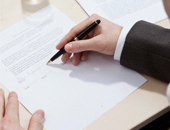 Using plain and precise language in making a formal grant request is vital to effectively communicate the thoughts about the proposed project. This is one of the best ways to perfect the writing task.
Using plain and precise language in making a formal grant request is vital to effectively communicate the thoughts about the proposed project. This is one of the best ways to perfect the writing task.
Writing a Good Proposal
What makes a formal request good? Here are the sections that you should include.
1. Abstract
This sums up your request for funding, preferably as short as two to three paragraphs. Don’t forget to include here your contact details.
2. Introduction
This tells something about your organization (mission, vision, and core values) and key officers. Cite briefly the staff’s background, skills, and daily duties.
3. Need Statement
Your needs assessment section should accurately relate facts, stats, and current but related studies to justify the need for proposed project.
4. Goals
Your goals and objectives should state measurable terms and explain ways how the project will create an impact. This includes specific activities to perform in order to attain the set goals.
5. Program Methods and Design
Your methods should describe your plans and techniques to fulfill your goals. It should not only be realistic, but also quantifiable. This always contains details about the location, target market, advertising schemes, and timeline of activities. You also need to have an effective monitoring system to ensure that your project will succeed. Frequent self-evaluations will surely help to lead the project toward reaching success.
6. Budget Plan
The costs listed in your budget and total funding request should be clear and accurate. In writing this part, list down all the items along with their costs. Try to explain the relevance of each item to the project. Inconsistencies may cast doubt and possibly turn off the potential funding source.
What Do I Do Next?
After you’ve made a draft of your proposal, don’t just submit the copy to funding sources as of yet. There are some other things you should do. These include:
1. Proofread
Have someone, such as a colleague, to read your output. This gives you a chance to improve your work.
2. Let Others Read It
This is but a good approach. Have someone read it, one who has less knowledge about your subject. If he or she grasped the essence of your project, the grantor will more likely to understand its value and significance.
3. Prepare Letters
A proposal will never be good without a cover letter and a letter of intent.
Can’t make a good written request? Seek help from expert grant writers.




